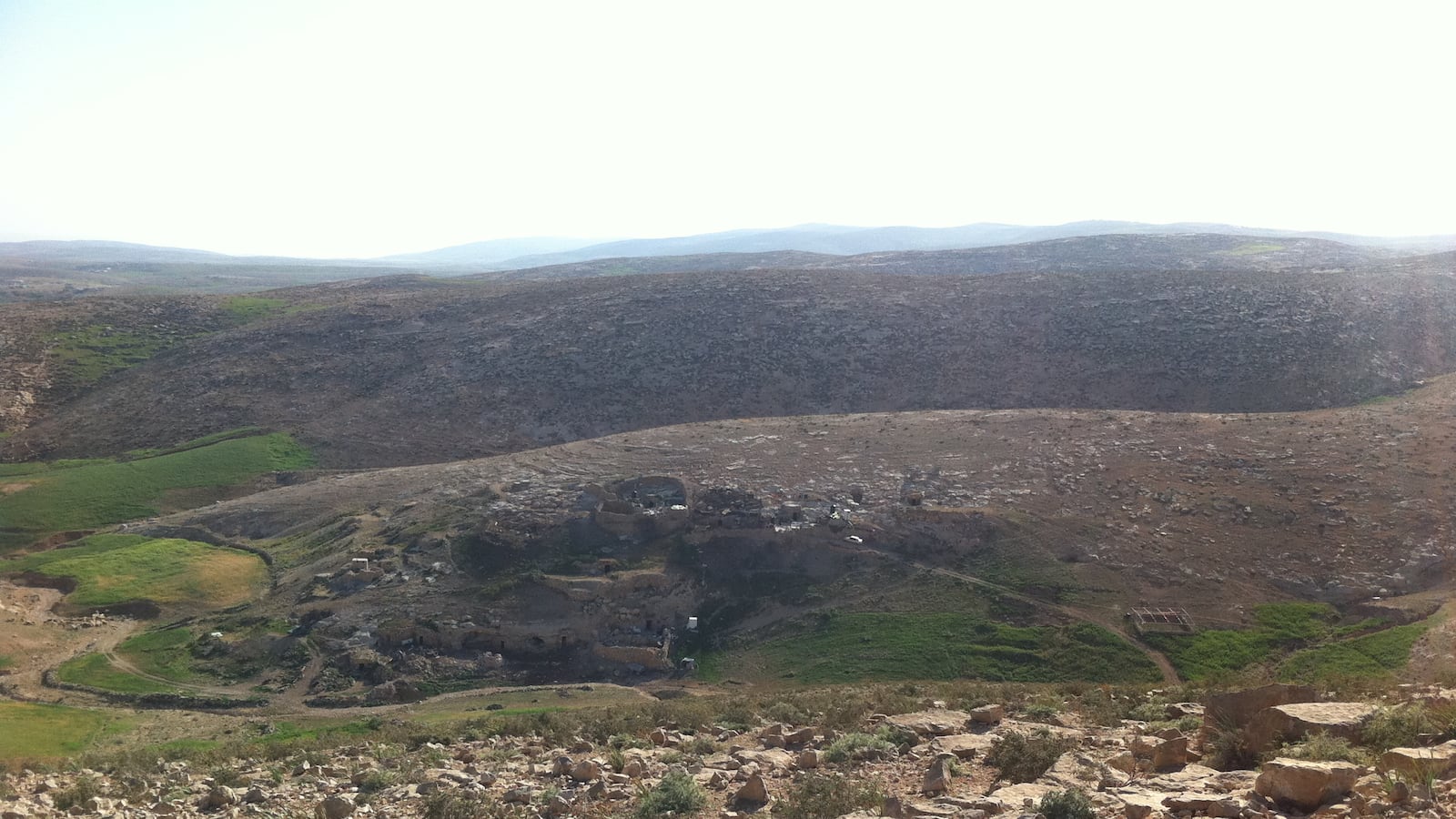Today is the 17th day of Tammuz, a fast day for observant Jews, one which marks the day the walls of Jerusalem fell. It's a sad day, one that begins the three-week period of mourning for the destruction of the Temple in Jerusalem. These weeks, and especially fast days that bookend them, are about remembering the experience of loss. Losing a place, a tradition, a way of life. They are hard, they are long, and they are why I decided to go to the South Hebron Hills today, to a place known as "Firing Zone 918."

The gathering was organized by the Association for Civil Rights in Israel and Breaking the Silence, among others. And it was an answer to the rallying cry of a group of Israeli authors who had signed a letter penned by one of their number—David Grossman—who called to all "those who are still able to listen" to "do something to bend back the occupation's giant, cruel hand," this time in Firing Zone 918.
This is not the first time well-respected author shave called attention to this place, among them David Grossman, Amos Oz, A. B. Yehoshua (the "triumvirate" or "holy trinity" of Israeli intellectuals). The tiny area was declared a Firing Zone in the early 1980s, but in 1999 the Ministry of Defense finally issued an order to evict its residents—over 1,000 Arabs living in some 12 small villages, some dwelling, as they have for centuries, in caves embedded in the hills.Why this decision was taken in 1999 is hard to know—perhaps because settlement had really begun in earnest in the 1980s (with Karmel, Ma'on, Avigayil, etc.) and the army wanted to "secure" the settlements, or perhaps because the Oslo process was waxing and there was a sense of now-or-never when it came to land ownership. We may never know. What we do know is that, on its face, the reason given for the evictions was to protect residents from an Israeli military training ground.Nonetheless, the order was carried out, and some 700 residents of the area loaded onto trucks in the middle of the night, carted out of their homes, and parked at the Ziv Junction. Many of their homes were subsequently demolished. No compensation was offered. No relocation plan was provided. That wasn't the responsibility of the Ministry of Defense.
One activist I spoke to, a man named Yaakov Manor, who helped found the Israeli Committee Against House Demolitions (ICAHD), came to the area in the days following the 1999 demolition. He told me the army was "throwing dirt in the wells," destroying everything it could. But, he said, they started a storm of public actions, trying to enlist public opinion to "lift" the community back up. Manor and others helped rebuild houses and provide for the residents' basic needs—food, blankets, household items. Soon, in 2000, Shlomo Lecker, an Israeli lawyer who joined us in the South Hebron Hills today, took the case to the Supreme Court, winning the residents the right to return to their homes and a demand that the army and the residents compromise on the issue of the Firing Zone. Since then, Manor said, "There has been no Firing" in Firing Zone 918—"no boots" even.
But there also has been no compromise. In 2005, a sort of freeze was ordered, leaving the residents in the unsound status quo. And finally, in 2012, the Ministry of Defense decided that four villages of the 12 could stay, but that eight had to be demolished. And so Lecker went back and appealed. But the appeals were first dismissed, and when a new petition was submitted in January of this year, a temporary order was issued to allow them to stay. But that same month, the boots came back, and the army began running training exercises in Firing Zone 918—and on July 15th, two weeks from now, there will be a discussion in the Supreme Court in which the lawyers defending these Palestinians will face off against the Ministry of Defense. This is not to say there will be a final decision—that, according to Breaking the Silence's Avner Gvaryahu, seems a long way off—but we're at a turning point. Hence Grossman's letter.
I don't need to cite international law forbidding population evacuation unless "the security of the population or imperative military reasons so demand," or its stiuplations that the displacement be temporary and that those evacuated should be given "proper accommodation," among other things. And I don't need to quote the Palestinian defense lawyer Lecker saying that there's no question that this is private Palestinian land. And I don't need to remind you that the neighboring settlers in the illegal (even by Israeli law) outpost of Havat Ma'on harass Palestinian children as they walk to school cut down their parents' olive trees. This is all obvious. Because that's the reality of the South Hebron Hills. Just last week, the Civil Administration confiscated a handicapped man's portable toilet because it lacked the required Civil Administration permit.
Firing Zone 918 is one, famous, troubling and now high-profile expression of the occupation. And as I broke my fast this 17th of Tammuz, I realized that for me this day need not only be about the fall of my Jerusalem, the tumbling of its walls, and displacement of my people. It can be about another kind of loss, another's loss that becomes our loss—in our day, in this time.
UPDATE: This article has been revised to reflect the following change: The Firing Zone was declared in the 1980s, not 1970s as originally stated in the piece.




